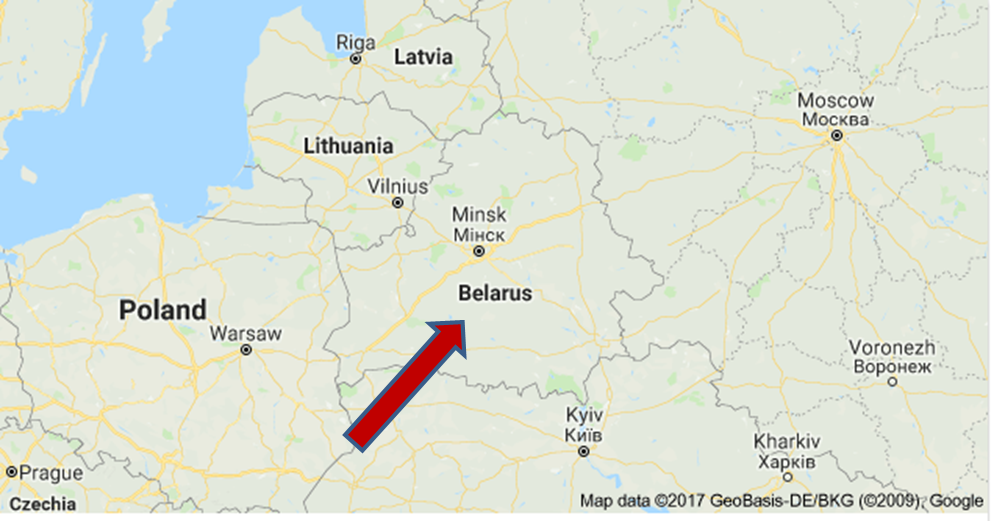Trade Cases

2017: A Year of Trade Contention
Written by Sandy Williams
January 2, 2018
It was an unusually busy year for steel trade actions in the United States in 2017. January brought the nominations of Robert Lighthizer as U.S. Trade Representative and Wilbur Ross as Commerce Secretary. During his confirmation hearings, Ross said, “I’m not anti-trade, I’m pro-trade. But I’m pro-sensible trade. Not pro-trade that is to the disadvantage of the American worker and the American manufacturing community. I think we should provide access to our markets to those countries who play fair, play by the rules, and give everybody a fair chance to compete. Those who do not should not get away with it. They should be punished, and severely.”
That is pretty much what has happened since. Antidumping and circumvention investigations were initiated and/or completed on cut-to-length plate, stainless steel, steel concrete reinforcing bar, wire rod, OCTG, corrosion resistant steel, and cold drawn mechanical tubing (CORE), as well as downstream products like steel tool chests and washing machines. Significantly, severe duties were assigned in most of the cases.
 The U.S. took aim at imports from China, Japan Taiwan, South Korea, Turkey, Germany, Italy, Russia, South Africa, Spain, Ukraine, United Arab Emirates, Austria, France, Switzerland, the United Kingdom and Belarus. (Where is Belarus??)
The U.S. took aim at imports from China, Japan Taiwan, South Korea, Turkey, Germany, Italy, Russia, South Africa, Spain, Ukraine, United Arab Emirates, Austria, France, Switzerland, the United Kingdom and Belarus. (Where is Belarus??)
U.S. Steel’s Section 337 complaint languished throughout 2017. The original 337 petition included three claims—false designation of origin, antitrust (price-fixing), and theft of trade secrets. The company withdrew its theft of trade secrets allegation, and a judge terminated the transshipment claim. Only the antitrust claim, appealed after dismissal, remains to be resolved.
Coinciding with the many AD/CVD investigations, the steel industry has been patiently, and sometimes not so patiently, waiting for an outcome in the Section 232 investigation on the impact of steel imports on national security. A similar investigation was initiated for imports of aluminum. Neither has been settled and the uncertainty has caused tension in the market as producers, fabricators, importers and exporters anticipate possible tariffs.
The Section 232 report was originally touted for release in June, then in July after the G20 Summit, then possibly while President Trump was in Youngstown in early August, then after health reform, then after tax reform—then maybe as a “Christmas gift.”
Trump said in his Ohio speech in June, “Wait until you see what I am going to do for steel and your steel companies. We are going to stop the dumping and stop all of these wonderful other countries from coming in and killing our companies and our workers. You will be seeing that very soon. The steel folks are going to be very happy.”
The steel industry and supporters of Section 232 are tired of waiting and have urged the administration to bring the issue to resolution. The extended waiting period resulted in a 20 percent surge of imports earlier in 2017. “I think it is a direct result of a commitment that was made by the president earlier in the year, a belief that it would go into effect sometime in the June time period as was indicated. With every month that passes that it doesn’t go into effect, all we see is a continued surge by importers to get their products in,” said Nucor CEO John Ferriola in October.
Leo Gerard, President of the United Steelworkers, vowed the union “will raise a lot of hell” if the Trump administration continues to delay action on Section 232. “Are we angry, are we frustrated? Damn right we are,” said Gerard in November. “If you’re going to ignore us, you’re going to pay a price.”
In December, it was reported that the Section 232 investigation into the impact of steel imports on national security fails to meet the approval of the Defense Department, the very department charged with protecting national security. Trade restriction proposals by Commerce Secretary Wilbur Ross would “unnecessarily vex U.S. allies,” said Defense.
Once a Section 232 investigation is launched, Commerce has 270 days to present recommendations to the president, which would be by mid-January. The president then considers the secretary’s recommendations and, if necessary, takes action. In the meantime, countries are lining up to appeal for exclusions.
Then there is the big issue—NAFTA. Negotiations are not going well for the U.S. and negotiators will head into the holidays without much to show for their efforts. Despite an overwhelming backlash to proposals by the U.S. from numerous industry sectors as well as trading partners, Lighthizer and Ross continue to push for a sunset clause, reduction or elimination of dispute mechanisms, 50 percent U.S. content in NAFTA vehicles, and increased overall NAFTA parts to qualify for tariff-free status.
The administration has threatened to withdraw from the agreement, but has also said the threat is a negotiation ploy. Many, however, see withdrawal from the agreement as imminent.
A new year is likely to see a new wave of trade restrictive and punitive measures. Analysts are predicting global backlash as the U.S. retreats further and further into a “U.S. first” protectionist stance.

Sandy Williams
Read more from Sandy WilliamsLatest in Trade Cases

Trump signs executive order aimed at making US shipbuilding ‘great again’
President Trump on Wednesday signed an executive order meant to breathe new life into American shipbuilding and curb Chinese dominance in the sector.

Trump still against selling USS to Japanese firm: Report
Despite ordering a new review of Nippon Steel’s bid for U.S. Steel, President Trump said he is still against selling USS to a Japanese company, according to media reports.

CRU: ‘Liberation Day’ brings sweeping US tariffs
For trading partners, the tariffs will reduce demand for exports and depress growth. Over the coming days, trade partners will almost certainly announce retaliation, which will hit US exports.

Leibowitz: The blowback from Trump’s ‘Liberation Day’ tariffs has only just begun
Tariffs are taxes that the government collects. Funds are disbursed by acts of Congress. If domestic companies, including manufacturers, are to benefit from “protective” tariffs, they must raise their prices as well. Maybe not by the entire amount of the tariffs, but by some. Inflation will come.

Supply chains, end-users brace for impact from tariffs
Supply chains are working through what the tariffs mean for them
